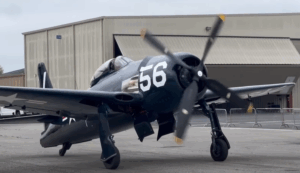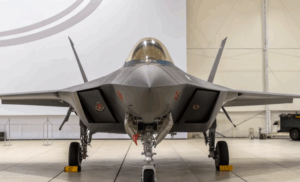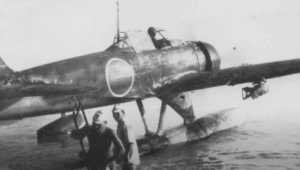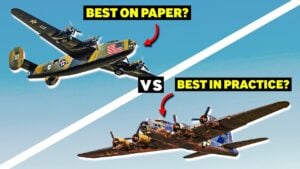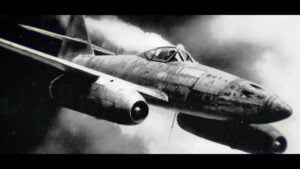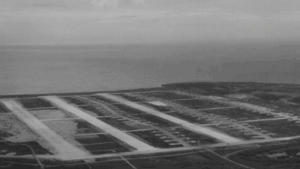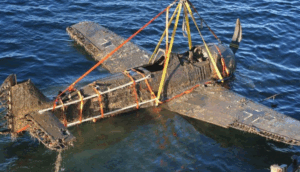5 WWII Aircraft Flaws That Were Fixed Post-War

BreitlingOfficial / YouTube
World War II pushed aircraft development at an incredible pace. Countries on all sides were desperate to improve the capabilities of their planes, whether for combat, reconnaissance, or transport. Yet, many designs came with serious flaws that were only corrected after the war. Engineers took lessons learned from the intense conflict and applied them to improve aircraft performance, safety, and durability. Here are five notable aircraft flaws from WWII that were fixed after the war.
1. Narrow Landing Gear

The Messerschmitt Bf 109 was one of the most iconic fighters of WWII, heavily used by the German Air Force. Despite its success in the skies, the aircraft had a significant design flaw—its narrow landing gear. This feature made it unstable during takeoff and landing, which was especially problematic for inexperienced pilots. The narrow track meant that even a slight mistake or crosswind could cause the plane to tip over or skid, resulting in frequent accidents.
Post-war improvements focused on refining landing gear designs across many aircraft, including the Bf 109. After the war, lessons from this instability were applied to newer aircraft designs, leading to wider, more stable landing gear configurations. This change improved the overall safety of fighter planes, reducing accidents during the critical moments of takeoff and landing. Aircraft manufacturers worldwide recognized that wider landing gear was a simple yet essential improvement for future planes.
2. Visibility Issues During Landings

The Vought F4U Corsair was a powerful American fighter, known for its distinctive bent wings and its ability to take on both air and ground targets. However, the plane had a major flaw—poor forward visibility when landing. The long nose of the aircraft blocked the pilot’s view of the runway or flight deck, making it difficult to judge landings, particularly on aircraft carriers.
The issue was severe enough that early in its service, the Corsair was relegated to land-based operations until the problem could be addressed. After the war, aircraft designers focused on improving cockpit visibility. Canopy designs were modified, and engineers adjusted nose shapes on future models to ensure better forward views for pilots. These adjustments made landings safer and helped ensure that future planes did not suffer from the same visibility issues that had plagued the Corsair.
3.Compressibility at High Speeds

The Lockheed P-38 Lightning was a unique twin-engine American fighter, admired for its speed and firepower. However, the aircraft had a dangerous flaw: it experienced compressibility at high speeds, particularly in steep dives. Compressibility is a phenomenon where the airflow over the wings becomes turbulent at near-supersonic speeds, causing control surfaces to lock up. Pilots who pushed the P-38 too hard often found themselves unable to pull out of a dive, leading to crashes.
During the war, efforts were made to address this issue by adding dive brakes and making adjustments to the wing design. However, a full solution came after the war, when aircraft manufacturers began to understand more about high-speed aerodynamics. The post-war era saw the introduction of designs that could handle high-speed airflow more effectively, which was crucial in the development of jet aircraft. The lessons learned from the P-38’s compressibility problem played a significant role in shaping the future of high-speed flight.
4. Lack of Armor and Self-Sealing Fuel Tanks

The Mitsubishi A6M Zero was Japan’s premier fighter plane during WWII. It was incredibly agile and had a long range, which made it a formidable opponent in the early years of the war. However, the Zero’s light frame came at a cost—it lacked armor protection for the pilot and did not have self-sealing fuel tanks. As a result, the plane was highly vulnerable to enemy fire. A single well-placed bullet could set the aircraft ablaze or kill the pilot.
After the war, military aircraft designs universally adopted self-sealing fuel tanks and reinforced armor for pilots. The need for greater survivability in combat became a priority, and these changes ensured that future aircraft were not as easily destroyed by enemy fire. The Zero’s vulnerability highlighted the importance of balancing speed and agility with protective measures, a lesson that influenced post-war fighter designs around the world.
5. Engine Fires

The Heinkel He 177 was Germany’s only long-range heavy bomber of the war, but it suffered from a fatal flaw—its engines were prone to catching fire. The aircraft was powered by four engines, which were paired in such a way that they shared a common propeller shaft. This complicated setup caused excessive heat, often leading to engine fires during flight. The problem was never fully resolved during the war, and many He 177s were lost as a result.
After the war, the issue of engine reliability became a central focus in aircraft development. Engineers learned the importance of simplifying engine designs and improving cooling systems to prevent overheating. The He 177’s struggles highlighted the dangers of over-complicating engine setups, and this lesson influenced future bomber designs. Post-war aircraft featured more reliable engine configurations that reduced the risk of fire and improved overall performance.














